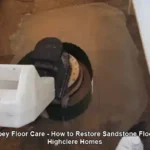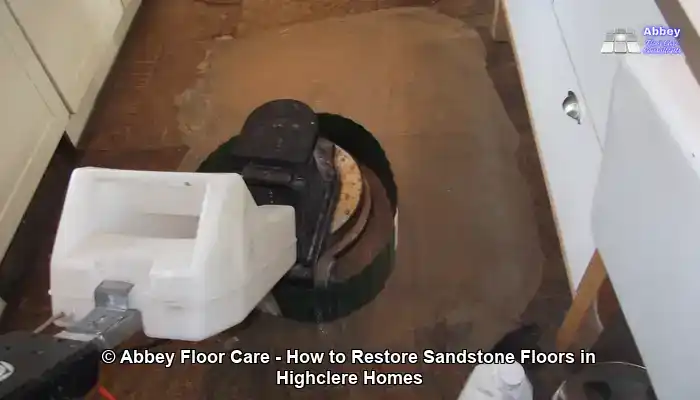
Last Updated on November 14, 2025 by David
Mastering Key Techniques for Restoring Sandstone Floors in Highclere Homes
- Understand the Unique Porous Nature of Sandstone: The porous structure of sandstone makes it especially vulnerable to aggressive cleaning techniques that can lead to etching or erosion. Recognising this characteristic is vital for effective care and maintenance.
- Utilise pH-Neutral Cleaners for Routine Maintenance: For ongoing upkeep, opt for pH-neutral cleaners, as they are gentle yet effective. For more intensive cleaning, stronger alkaline solutions can be employed, ensuring a thorough rinse and resealing afterward.
- Maintain Topical Sealers for Maximum Protection: Consistent care of topical sealers is essential, as they not only enhance the stone’s colour but also provide crucial protection, particularly in high-traffic or decorative areas.
- Follow Correct Restoration Procedures for Optimal Results: Successful restoration involves meticulous surface preparation, safe agitation methods, and thorough rinsing to eliminate residues, followed by sealing to protect against future stains.
- Implement Regular Maintenance Practices to Prolong Lifespan: Engaging in regular maintenance with gentle tools and prompt responses to spills safeguards the finish, ultimately reducing the need for deep cleaning interventions.
What Makes Sandstone Different from Other Stone Materials?

Exploring the Composition and Porosity of Sandstone
Sandstone is a naturally occurring sedimentary stone formed from the compaction of sand and mineral particles. Its inherent porosity allows for moisture and stains to be absorbed if the stone is not sealed adequately. The surface can vary from smooth to textured, influenced by the cutting and finishing techniques used. Regardless of the specific type of sandstone flooring, all variants share a common requirement: they require gentle, stone-safe care to retain both their structural integrity and visual appeal for a long time.
Recognising Common Problems Affecting Sandstone Floors in Highclere Homes
In Highclere and nearby areas, sandstone floors are often found in older buildings and historic residences. Over time, elements such as foot traffic, different cleaning chemicals, and seasonal moisture can cause surface wear, uneven discolouration, and reduced effectiveness of sealants. Given that sandstone is softer than granite or slate, it is more prone to erosion, highlighting the importance of regular maintenance to sustain its aesthetic and functional qualities.
Expert Recommendations: Top Products for Daily Sandstone Care
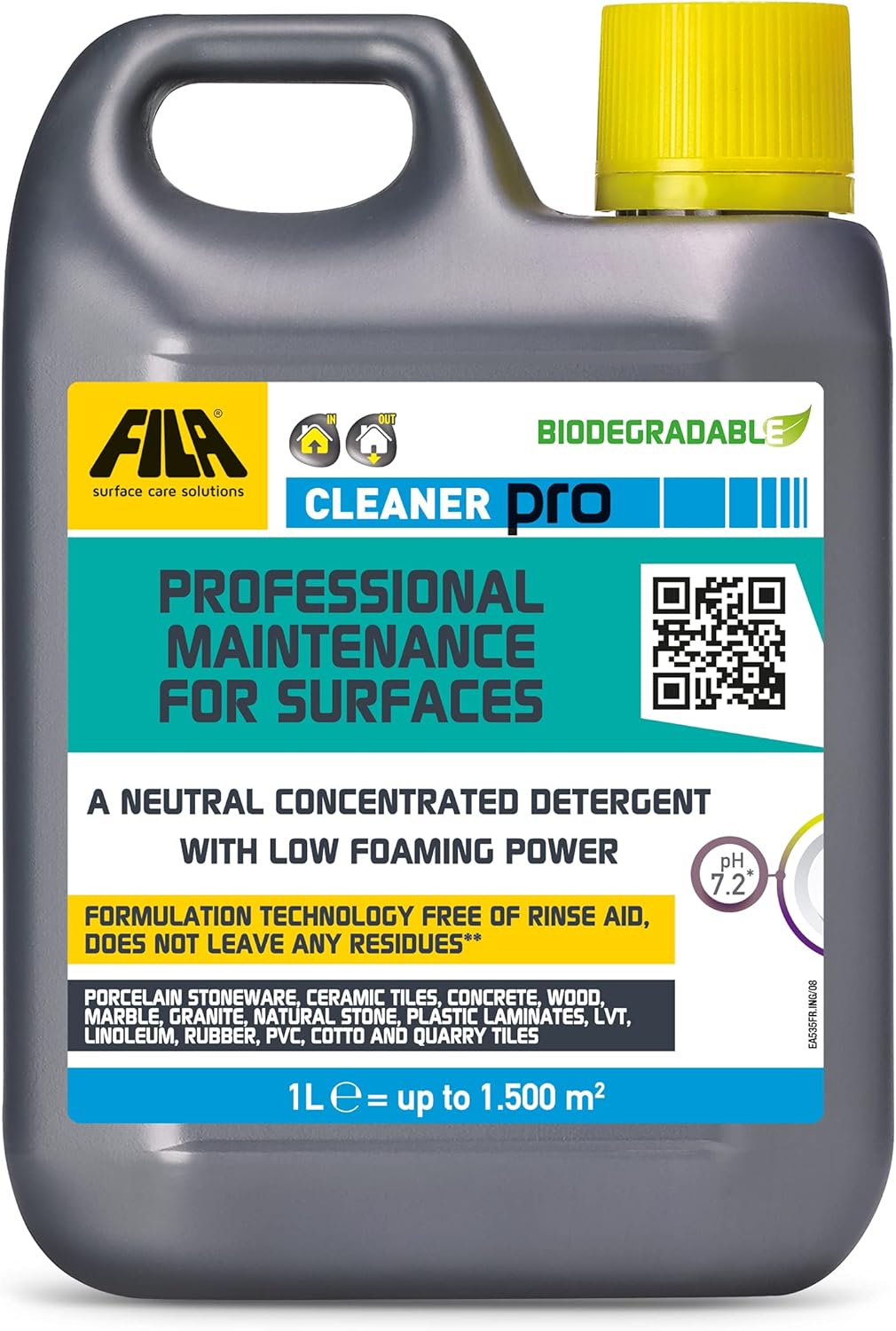
Fila Pro Floor Cleaner
|
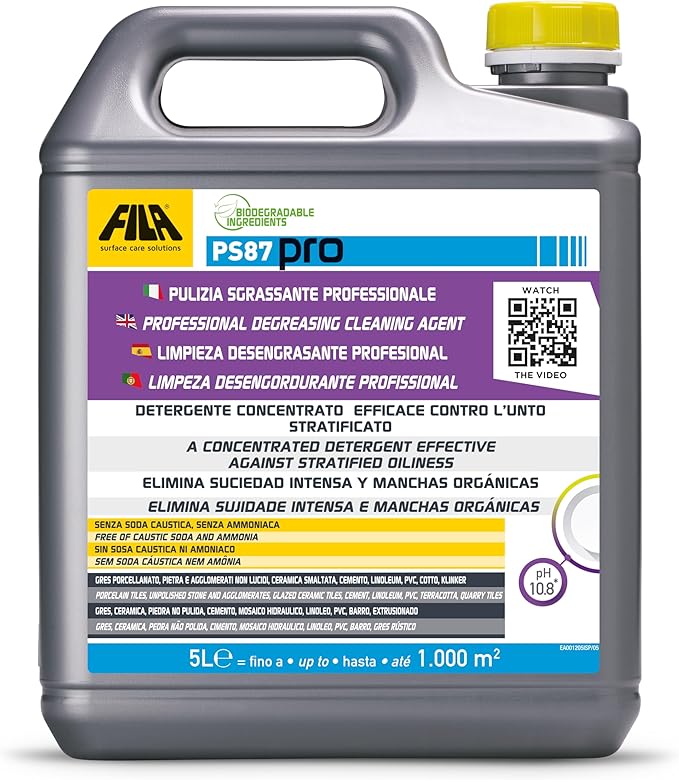
FILA PS87 PRO
|

Vileda H2PrO Spin Mop System
|
What Signs Indicate That Your Sandstone Floor Needs Restoration?
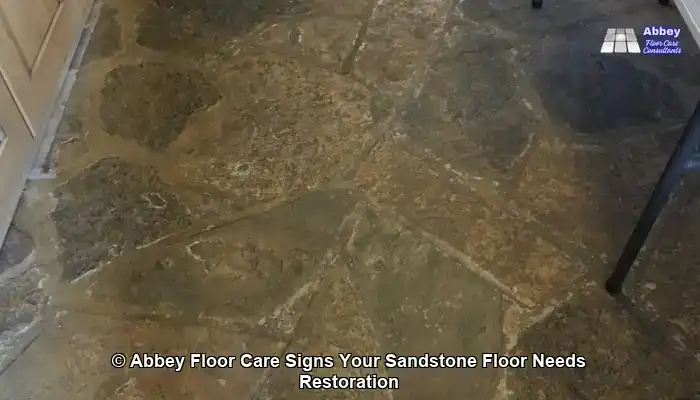
How to Identify Surface Wear and Discolouration on Your Sandstone Floors
Over time, sandstone floors may lose their original colour and texture due to various factors, including foot traffic, the build-up of cleaning residues, and moisture exposure. If the surface appears uneven, dull, or patchy, this may indicate that the protective layer has significantly worn away, allowing dirt and liquids to penetrate more easily. Such degradation can severely impact both the aesthetic and structural integrity of the flooring, making timely restoration crucial for maintaining its charm and durability.
What Are the Signs of Loss of Sealant Protection on Sandstone Floors?
As sealant deteriorates, sandstone becomes increasingly porous and vulnerable to staining. You may notice that water no longer beads on the surface but instead seeps into the stone. This indicates a critical loss of protective properties, necessitating resealing as part of the restoration process to guard against further damage and staining, ensuring the longevity of your beautiful flooring.
How to Recognise Slippery or Uneven Textures on Sandstone Floors
Sandstone should feel stable and firm underfoot, displaying a consistent texture. If certain sections become slippery, powdery, or rough, this may signify surface erosion or residue accumulation. These changes serve as clear indicators that the floor requires deep cleaning and resealing to restore both its safety and aesthetic appeal, ensuring a comfortable and secure walking experience for all who enter.
How to Select the Most Effective Cleaning Method for Sandstone Floors
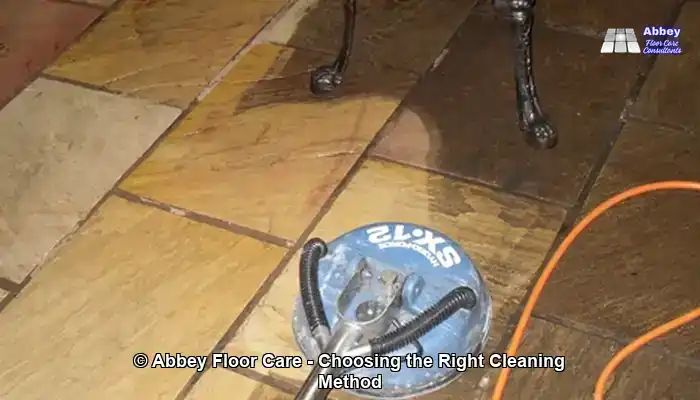
When Should pH-Neutral Cleaners Be Used for Sandstone Maintenance?
For sandstone floors that are lightly soiled, a pH-neutral cleaner is generally effective. These products lift surface dirt without damaging the stone’s mineral structure or sealant. They are ideal for regular maintenance and can be safely applied to both sealed and unsealed sandstone, provided that the soil load remains low. By routinely incorporating these cleaners into your cleaning schedule, you help maintain the stone’s natural beauty and integrity, making them an essential part of your maintenance strategy.
When Is It Appropriate to Use Alkaline Cleaners for Heavy Soiling?
In situations where sandstone has absorbed oils, grime, or organic matter—especially in high-traffic zones like kitchens or entryways—an alkaline cleaner may be required. These solutions emulsify embedded soils, facilitating their removal from the porous surface. However, it is crucial to rinse thoroughly afterward to prevent any residue build-up. If the cleaner necessitates an extended dwell time, resealing the floor afterward is advisable to restore protective qualities and avert future staining problems.
Why Should Acidic or Abrasive Cleaning Products Be Avoided?
Acidic cleaners, like vinegar or limescale removers, can etch and damage sandstone, resulting in permanent harm. Furthermore, abrasive powders and stiff brushes may scratch the surface or accelerate the erosion of softer areas, worsening deterioration. Always choose stone-safe products and cleaning tools that effectively cleanse without compromising the stone’s integrity and appearance, thereby ensuring its beauty is preserved for many years.
Your Comprehensive Guide to Sandstone Floor Restoration Procedures
How to Prepare the Surface and Remove Dust Effectively
Begin by clearing the area and employing a soft-bristle broom or a vacuum set to hard-floor mode to remove any loose debris. Avoid dragging furniture or using metal-edged tools, as both can scratch or chip the stone. If any residual polish or residue is present, consider deploying a stone-safe stripper before starting the cleaning process to ensure optimal results and a clean slate.
How to Apply the Cleaner and Use Safe Agitation Techniques
Choose an appropriate cleaner based on the level of soil present. For general dirt, a pH-neutral solution is suitable. For significant contamination, an alkaline cleaner should be diluted according to the instructions on the label. Apply the solution evenly and allow it to dwell for 5 to 15 minutes. Gently agitate with a white pad or a soft brush to lift embedded dirt without damaging the stone's surface.
How to Rinse and Dry the Floor to Prevent Residue
Thoroughly rinse with clean water, using a wet vacuum or multiple mop passes to remove all residues. Leftover cleaning agents can leave streaks or dull the finish, undermining your diligent efforts. After rinsing, allow the floor to dry completely before assessing whether sealing or polishing is necessary. A dry microfiber mop can speed up the drying process and help prevent water spots that could mar the surface.
Proven Strategies for Sealing Sandstone for Long-Term Durability
Understanding the Difference Between Impregnating and Topical Sealers
Impregnating sealers penetrate the sandstone's surface, providing invisible barriers against moisture and stains from within. These sealers are ideal for homeowners who prefer a natural matte finish for their floors. Conversely, topical sealers create a protective layer on the surface, enhancing colour or providing a satin or glossy sheen. When maintained and replenished correctly, topical sealers can be a fantastic choice for high-traffic areas or decorative finishes.
How to Properly Apply Sealer for Maximum Effectiveness
Before applying the sealer, ensure the floor is completely clean and dry. Use a lint-free cloth, sponge, or applicator pad to apply the sealer evenly, working in small sections to guarantee thorough coverage. Allow the product to absorb for the recommended duration and wipe away any excess to prevent streaks or residue. Some sealers may require a second coat, particularly on more porous or weathered stone, to ensure comprehensive protection.
When Should You Reseal Your Sandstone Floor and How Often?
Most sandstone floors benefit from resealing every 2 to 4 years, depending on foot traffic and moisture exposure. In kitchens, hallways, or entrances, resealing may be needed more frequently. A simple water-drop test can be beneficial: if water soaks in instead of beading, it is time to reseal. Regular inspections can help ensure that the floor remains protected and easier to clean over time, preserving its beauty.
Enhancing Aesthetic Appeal and Safety of Sandstone Floors
Using Colour-Enhancing Sealers to Restore Sandstone Vibrancy
If your sandstone floor appears faded or washed out, a colour-enhancing sealer can rejuvenate its natural tones and highlight the unique character of the stone. These sealers subtly darken the surface while accentuating variations in grain and mineral content. They work particularly well on weathered or pale sandstone but should only be used after thorough cleaning and adequate drying to ensure optimal adhesion and results.
How to Improve Slip Resistance on Sandstone Floors
In areas that are prone to moisture—such as kitchens, bathrooms, or entryways—enhancing slip resistance is crucial for safety. Some sealers come with anti-slip additives, or you can apply a separate non-slip treatment over the sealed surface. Always conduct a test in a small area first to ensure that the finish remains visually appealing and easy to maintain while providing the necessary friction for safety.
Exploring Buffing and Polishing Techniques for Sandstone Floors
While sandstone is typically not polished to a high gloss like marble, light buffing with a soft pad can enhance its overall appearance and feel underfoot. For a subtle sheen, consider using a stone-safe polishing compound designed for honed finishes. Steer clear of wax-based products, as they can trap dirt and create an uneven shine over time, leading to a dull appearance.
Comprehensive Maintenance Recommendations for Sandstone Floors in Highclere Homes
Establishing Effective Weekly and Monthly Cleaning Routines
To maintain sandstone floors in excellent condition, dry mop regularly with a microfiber pad to remove dust and grit. For weekly cleaning, use a diluted pH-neutral cleaner, ensuring that the floor is not soaked. Additionally, perform monthly inspections of high-traffic areas for wear and promptly reapply cleaner as necessary to maintain the stone's condition. Avoid excessive wetting, as this can weaken sealants over time, leading to more significant maintenance challenges.
Identifying the Best Tools for Ongoing Sandstone Care
Flat microfiber mops are ideal for cleaning sandstone, as they effectively capture fine particles without scratching the surface. It is advisable to avoid sponge mops, as they may push dirt deeper into the pores. For larger areas, consider a spray mop with refillable cartridges for controlled application of stone-safe solutions. Always rinse mop heads thoroughly after use to prevent residue build-up, ensuring effective cleaning during each session.
How to React Quickly to Spills and Stains on Sandstone Floors
Immediately blot spills using a soft cloth or paper towel. Avoid rubbing, as this can exacerbate the stain. For oily or pigmented spills, apply a small amount of stone-safe cleaner and rinse thoroughly with clean water. If a stain persists, utilise a baking soda and water poultice, ensuring to test first to confirm it won’t affect the finish. Swift action is essential to prevent permanent marks and maintain the floor's pristine appearance.
Common Questions Regarding Sandstone Floor Restoration
Can Steam Cleaners Be Used on Sandstone Floors?
It is advisable to steer clear of steam cleaners on sandstone. The high heat and moisture can compromise sealants and force water deep into the stone’s pores, potentially causing long-term damage. Instead, use stone-safe liquid cleaners and gentle agitation for effective deep cleaning without jeopardising the integrity of the surface.
What Should I Do If My Floor Is Already Damaged?
If your sandstone floor shows deep stains, scratches, or surface erosion, cleaning alone may not be sufficient. In such cases, professional honing or resurfacing may be necessary to restore the stone’s appearance. Once the essential repairs are complete, sealing the floor will help prevent future damage and make ongoing maintenance simpler, ensuring its longevity.
How Long Can I Expect the Restoration to Last?
With proper sealing and maintenance, a restored sandstone floor can remain in excellent condition for several years. High-traffic areas may necessitate touch-ups or resealing every 2 to 3 years, while less-trafficked areas can often last longer without significant intervention. Regular care is vital for extending the time between major restorations and ensuring the durability of your flooring investment.
The Article How to Restore Sandstone Floors in Highclere Homes first found on https://www.abbeyfloorcare.co.uk
The Article Restore Sandstone Floors in Highclere Homes Effectively appeared first on https://fabritec.org
The Article Effective Restoration of Sandstone Floors in Highclere Homes Was Found On https://limitsofstrategy.com
The Article Restoration of Sandstone Floors in Highclere Homes Made Easy found first on https://electroquench.com
